There is no dispute about the immense nutritional value of including greens to promote a healthy lifestyle. Every nation on earth recommends leafy greens as an essential part of their food culture. In addition, health and wellness trends are growing worldwide, and people are seeking out nutrient-dense foods like leafy greens to support their overall well-being.
All over the planet, people in the wellness arena are exploring various types of greens, learning how to grow these versatile wonders, and experiencing the wide range of taste profiles of leafy greens.
Greens are very popular, widely consumed, and an important part of a healthy diet, and their best uses are shared widely. These green wonders are valued for their nutritional content, versatility, and role in creating salads, side dishes, smoothies, and other food applications.
Here is a list of popular types of greens, how to grow them, their taste profiles, and best uses.
1. Spinach
Spinach grows best in well-drained soil with full sun. You can improve the soil’s fertility by feeding it with compost or well-rotted manure. In addition, mulching generously around the plants enhance moisture retention, keep the soil cool, and suppress weeds.
The nutty and slightly earthy flavor of spinach is a favorite in many homes and restaurants, and the low-calorie, nutrient-dense green is used in salads, cooked dishes, smoothies, soups, and stews. Remember, spinach is rich in vitamins, minerals, and antioxidants, making it a valuable addition to your diet. Enjoy its versatility and experiment with different ways to incorporate this nutritious green into your meals.

Vibrant green spinach leaves are a nutritional powerhouse packed with vitamins and minerals.
©iStock.com/JackF
2. Kale
If you want your kale to flourish, choose a sunny location, although it can manage partial shade. Kale is cold-hardy and can even thrive in cooler temperatures. Before you plant kale, you must work some compost into the soil, which must be rich in organic matter. Mulching will help the ground to retain moisture and regulate soil temperature.
Kale is a type of green with a slightly bitter and earthy flavor and sports an impressive nutritional profile, making it a versatile ingredient for many dishes. Its adaptability to cooking methods and ability to hold up well in various recipes contribute to its popularity as a nutritious and delicious leafy green.

Kale is a low-maintenance vegetable that is easy to grow in your garden.
©Veja/Shutterstock.com
3. Swiss Chard
Swiss chard prefers well-drained soil and can tolerate full sun and partial shade. This tough green doesn’t require heavy fertilization. A balanced fertilizer applied at planting and during growth can be sufficient. It is important to keep the soil consistently moist but not soggy.
When eaten raw, this nutritious green has a bitter taste but turns into a milder, slightly earthy, and sweet flavor when cooked. Swiss chard’s colorful stems and leaves make it delightful to look at and a healthy choice in your favorite meals. Experiment with different cooking methods to find the best way to enjoy its mild and slightly earthy taste.

Colorful Swiss chard leaves are a vibrant and versatile addition to your culinary canvas.
©quiggyt4/Shutterstock.com
4. Collard Greens
Collard greens will thrive in full sun but can tolerate partial shade in a location with well-draining soil. These plants need a balanced fertilizer at planting and during growth to promote healthy development. Maintain regular moisture in the soil, especially during dry spells.
The bitter taste of collard greens is less pronounced than kale. This versatile leafy green can be sautéed, stir-fried, boiled, or steamed. You can also use it in soups, stews, and smoothies or try different cooking methods to find the ones that best suit your taste.
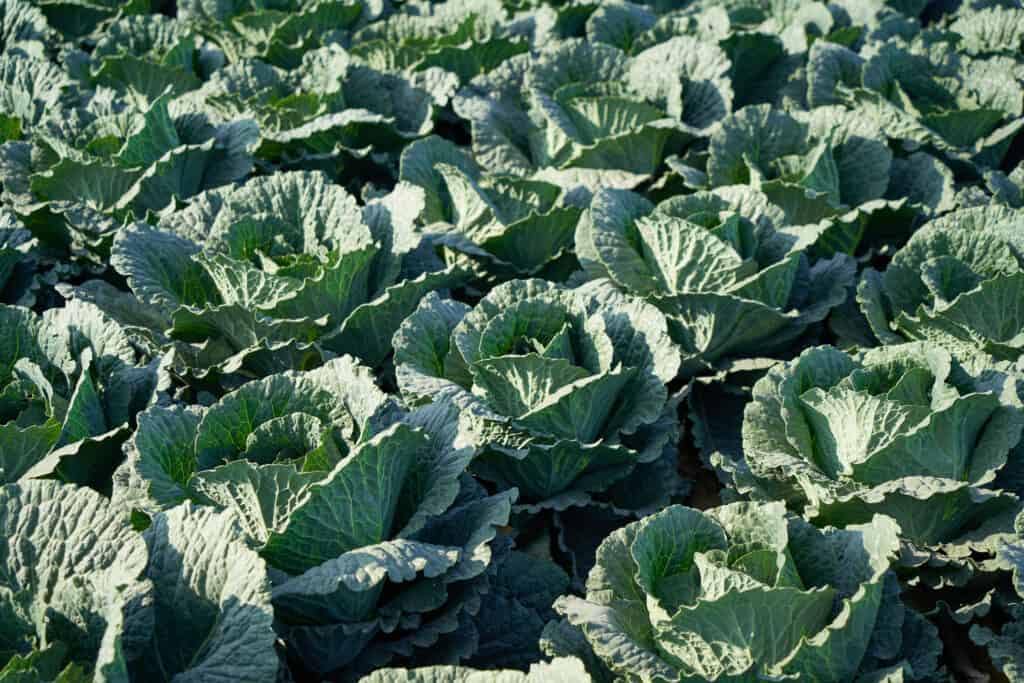
Robust collard leaves are a taste of southern comfort and a nutritional powerhouse.
©iStock.com/Wirestock
5. Mustard Greens
Mustard greens are relatively easy to grow and can be cultivated in garden beds and containers. This nutritious vegetable can be produced in a variety of climates. You can grow mustard greens from seeds that you can sow directly in the soil in rows about 12 -18 inches apart. Remember to water at the base of the plants to prevent fungal diseases.
These greens are peppery and slightly spicy, like radishes and Arugula. Young leaves are generally milder, while older leaves can be more intense. Mustard greens can be cooked by sautéing, steaming, or boiling. Cooking can mellow their flavor. They are often used in stir-fries, soups, and stews.
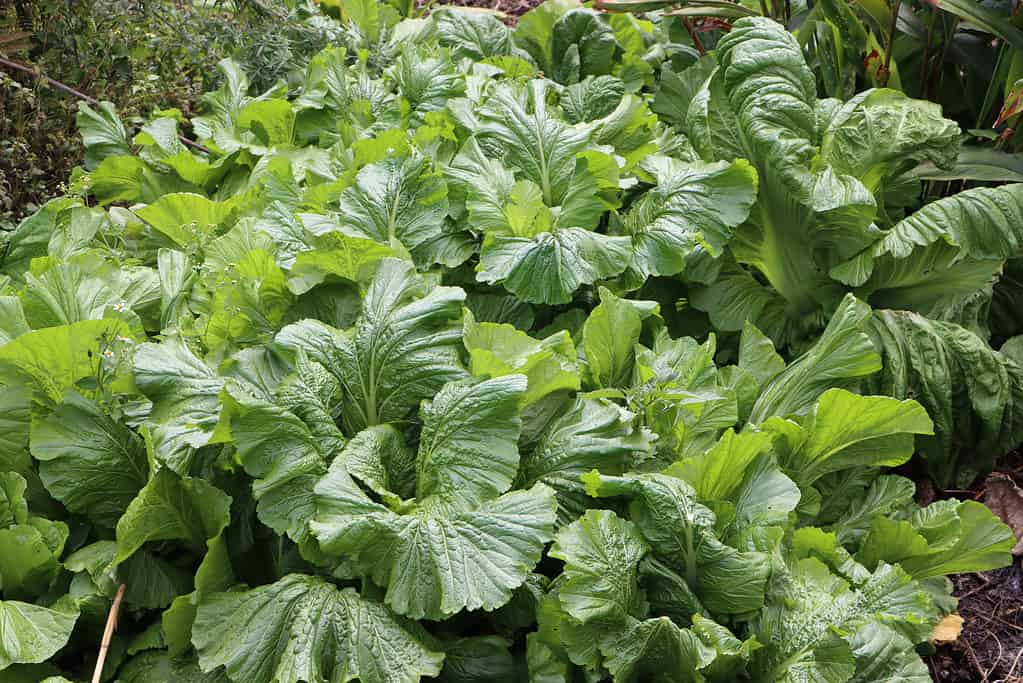
Everyone should add mustard greens to their diet because of their high nutritional value.
©Pravruti/Shutterstock.com
6. Turnip Greens
Turnip greens grow well in full sun and fertile soil for a healthy harvest. You must choose a spot with 6-8 hours of sunlight daily. In addition, you must amend the ground with enough compost to feed it. The seeds can be sown outdoors during March and April, and sowing can be done closer together as they are grown for the leaves and not for the turnip root.
The mature turnip leaves taste bitter and peppery, but the younger leaves are usually tender and milder in flavor. Although the leaves can be used for sautéing, boiling, steaming, or braising, you can explore different methods to meet your preference.
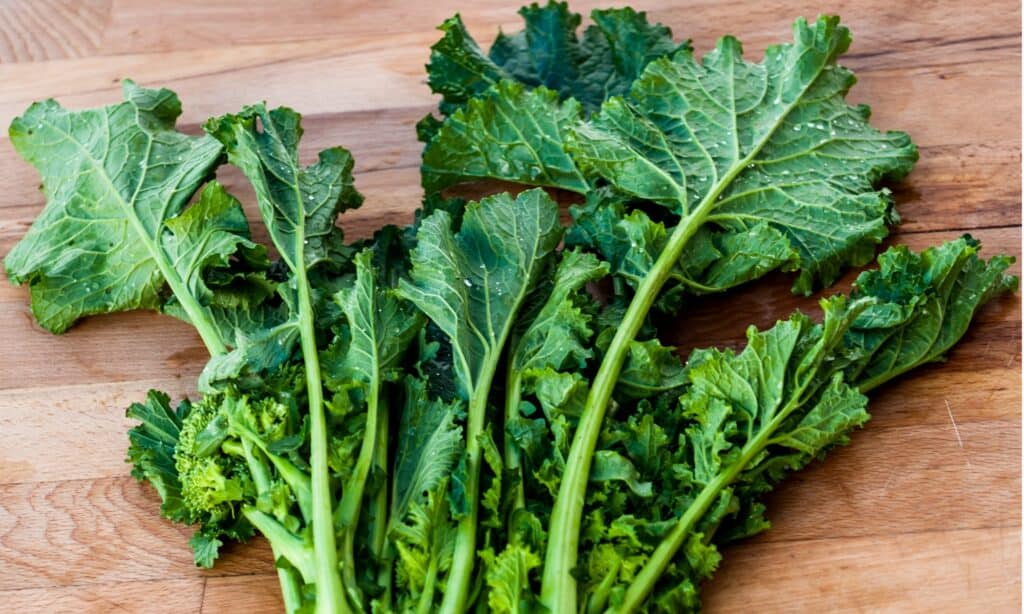
These greens are a testament to nature’s generosity, showcasing vibrant hues and robust taste.
©iStock.com/peuceta
7. Beet Greens
A type of green that’s nutrient-rich and easy-to-grow are the edible leaves of the beetroot plant. These plants will thrive in full sun to partial shade, and the soil must always be kept moist, especially during germination. When the plants are established, you should only water when the top few inches feel dry.
This leafy green has a mild, earthy taste and can be used in various dishes, including salads, stir-fries, soups, and stews. Be creative in the kitchen and explore different ways to incorporate beet greens into your meals for a nutritious and flavorful experience.
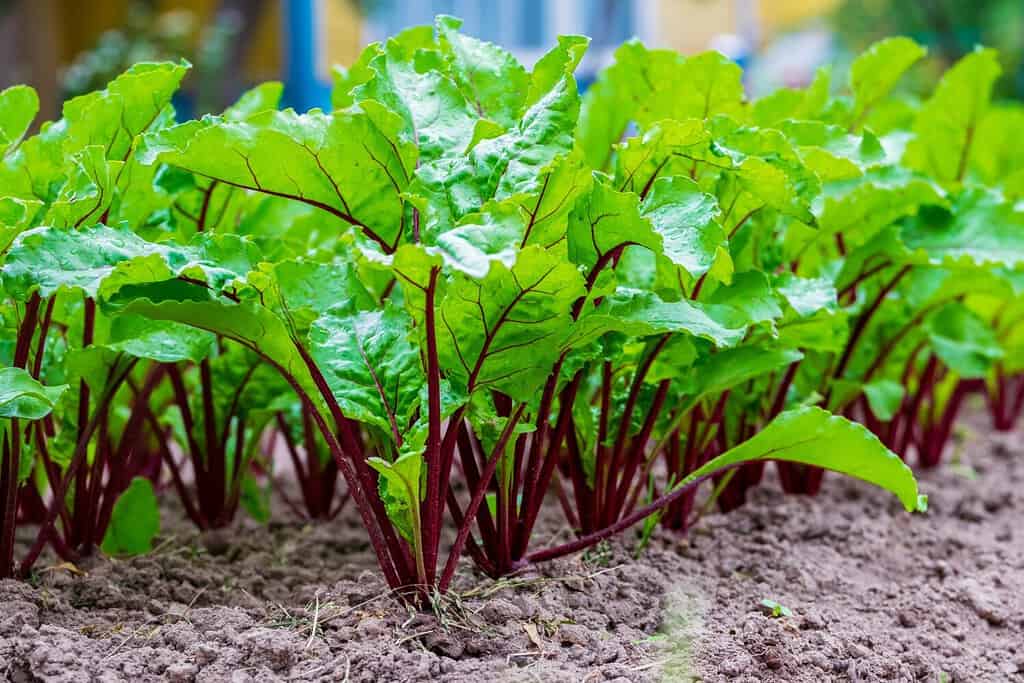
Beet greens are a vibrant bouquet of edible vitality, offering earthy flavors and a touch of elegance.
©Denis Shitikoff/Shutterstock.com
8. Arugula
Also known as rocket or roquette, arugula is a popular leafy green that is relatively easy to grow.
These greens love cooler weather and can grow in partial shade in well-drained soil. Be careful not to over-water as this can lead to root rot and other plant diseases.
The Arugula has a distinct, peppery, and slightly spicy flavor, adding a unique kick to salads and other dishes. Arugula can be enjoyed raw or cooked, but it is mostly used raw in salads, for pesto, and topping off pizzas. This green is a true allrounder in the kitchen.

Arugula leaves are a peppery dance of flavors on the palate, lending a lively twist to your dishes.
©Sea Wave/Shutterstock.com
9. Bok Choy
Also known as Chinese cabbage or Pak Choi, bok choy is a versatile and nutritious leafy vegetable commonly used in Asian cuisine. This delicious green prefers cool weather and can tolerate light shade. Ensure the soil is well-drained and avoid exposing the plants to extremely hot conditions.
These delicious eastern leafy greens taste mild and slightly sweet with a hint of bitterness. Bok choy is unique because it has both tender leaves and crisp stalks; both sections are edible, nutritious, and delicious. It’s a versatile vegetable used in various raw and cooked culinary applications.

Bok choy is a harmonious blend of crispness and tenderness, bringing Asian inspiration.
©Nungning20/Shutterstock.com
10. Watercress
Watercress requires a consistent source of clean, flowing water. It can be grown in a natural stream, pond, or in containers with a water source that’s continuously moving. This nutritious marvel can be propagated from stem cuttings. You only need to snip a healthy stem with several leaves and place it in water or damp soil until roots develop.
This wonder green has a distinct peppery and slightly bitter flavor that adds a zing to salads and dishes. Watercress is used in many culinary applications and is also known to assist with weight loss.
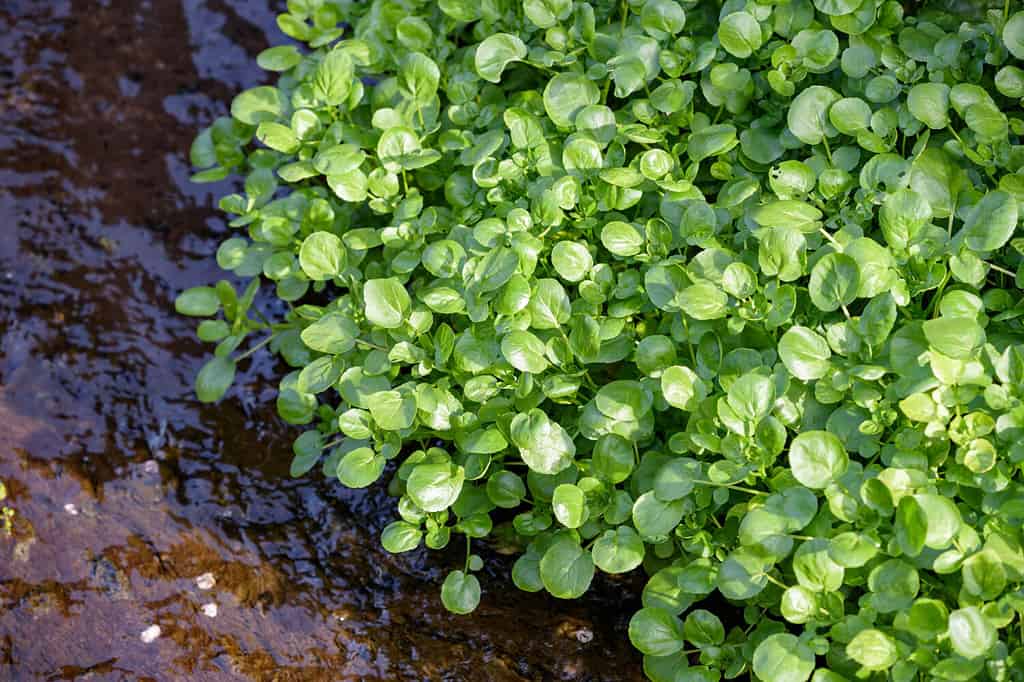
Nature’s refreshing elixir with a tangy zest and pleasing crunch, watercress is a delicious green.
©Picmin/Shutterstock.com
11. Dandelion Greens
If you’re looking for an easy-to-grow type of green, this one is for you. Dandelions prefer full sun to partial shade. They can tolerate a range of soil types but grow happily in well-draining, slightly acidic to neutral soil. You can sow dandelion seeds directly into the ground in early spring or late summer. Keep the soil moist but not too soggy. Because dandelion greens have a shallow root system, you must water them frequently rather than heavily.
The flavor profile of dandelion leaves is earthy, peppery, and slightly bitter. The best uses for these greens are in salads, smoothies, pesto, and stir-fries. You can use the leaves to brew a healthy tea.

Dandelion greens are a bitter symphony of nutrient-rich delights.
©NBLX/Shutterstock.com
12. Endive
Endive is a leafy green vegetable that comes in two main varieties: curly endive and Belgian endive. The curly endive is easy to grow indoors from seed. In addition, you can start sowing outdoors once temperatures rise. Belgian endive is propagated from the roots of chicory plants in late spring or early summer.
Curly endive has a sharp, bitter flavor, whereas Belgian endive tastes pleasantly bitter and mildly nutty with a hint of sweetness. Both types of endive are great in salads. The crisp texture and slightly bitter taste can add complexity to salads when combined with other greens, fruits, and nuts.

Explore the delicate balance of flavors with endive greens.
©kolesnikovserg/iStock via Getty Images
13. Romaine Lettuce
Romaine lettuce, or cos lettuce, is a type of green that does best in full sun but may tolerate some light shade. Ensure your chosen location receives at least 6 hours of sunlight daily. You should use a soaker hose or drip irrigation to prevent the leaves from getting wet, which can help prevent disease.
This popular green has a crisp texture and a slightly bitter, earthy flavor. The bitterness is milder in comparison to some other lettuce varieties like Arugula. Its leaves make it a popular choice for salads and wraps. Romaine lettuce is a key ingredient in a Caesar salad, where its crispness pairs well with creamy Caesar dressing.
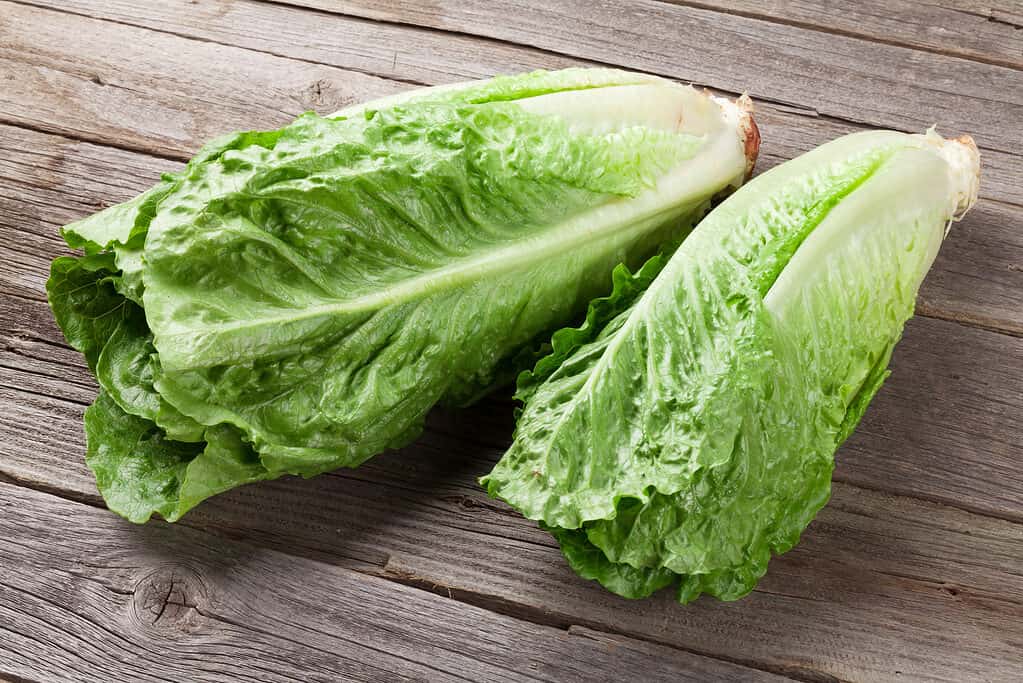
Crisp romaine lettuce is a garden’s crown jewel. Experience the satisfying crunch.
©iStock.com/karandaev
14. Sorrel
Sorrel is a unique and tangy leafy green that thrives in well-drained soil and prefers partial shade to full sun. Providing some afternoon shade can help prevent the leaves from wilting if you’re in a hot climate. Always keep the soil moist but not soggy. You must water deeply whenever the top inch of soil feels dry. Applying some mulch can help retain moisture and prevent weed growth.
The flavor profile of this green is tangy, lemony, and slightly sour. This signature zesty taste is why sorrel is included in many dishes like soups, sauces, salads, fish, and pasta.

The flavor profile of sorrel is tangy, lemony, and slightly sour.
©Muséum de Toulouse, CC BY-SA 4.0, via Wikimedia Commons – Original / License
15. Green Cabbage
Green cabbage is a cool-season vegetable that is versatile and easy to grow in your garden. Your cabbages will grow best in well-draining, fertile soil in full sun. Treat the soil before planting with compost or well-rotted manure to enhance soil structure and nutrient content further.
Cabbage has a mild, slightly sweet flavor with a crisp texture, making it a favorite in many kitchens around the globe. Coleslaw, sauerkraut, cabbage rolls, and cabbage wraps are a few of the best uses for cabbage.

Cabbage is nature’s nourishing layer. Uncover the hearty essence of this versatile vegetable.
©Digihelion/Shutterstock.com
Summary of the Different Types of Greens and Their Flavor
| Number | Types of Greens | Flavor Profile |
|---|---|---|
| #1 | Spinach | Nutty and slightly earthy |
| #2 | Kale | Slightly bitter and earthy |
| #3 | Swiss Chard | Mild and slightly earthy |
| #4 | Collard Greens | Slightly bitter and hearty |
| #5 | Mustard Greens | Peppery and slightly spicy |
| #6 | Turnip Greens | Slightly bitter and peppery |
| #7 | Beet Greens | Mild and slightly earthy flavor |
| #8 | Arugula | Peppery, slightly bitter, and somewhat nutty |
| #9 | Bok Choy | Mild and slightly sweet with a hint of bitterness |
| #10 | Watercress | Tangy, slightly bitter, and spicy |
| #11 | Dandelion Greens | Slightly bitter and earthy |
| #12 | Endive | Slightly bitter and mildly nutty, with a hint of sweetness |
| #13 | Romaine Lettuce | Mild, slightly bitter flavor |
| #14 | Sorrel | Tangy, lemony, and slightly sour |
| #15 | Green Cabbage | Mild and slightly sweet |
The photo featured at the top of this post is © iStock.com/fotolism_thai
Thank you for reading! Have some feedback for us? Contact the AZ Animals editorial team.







